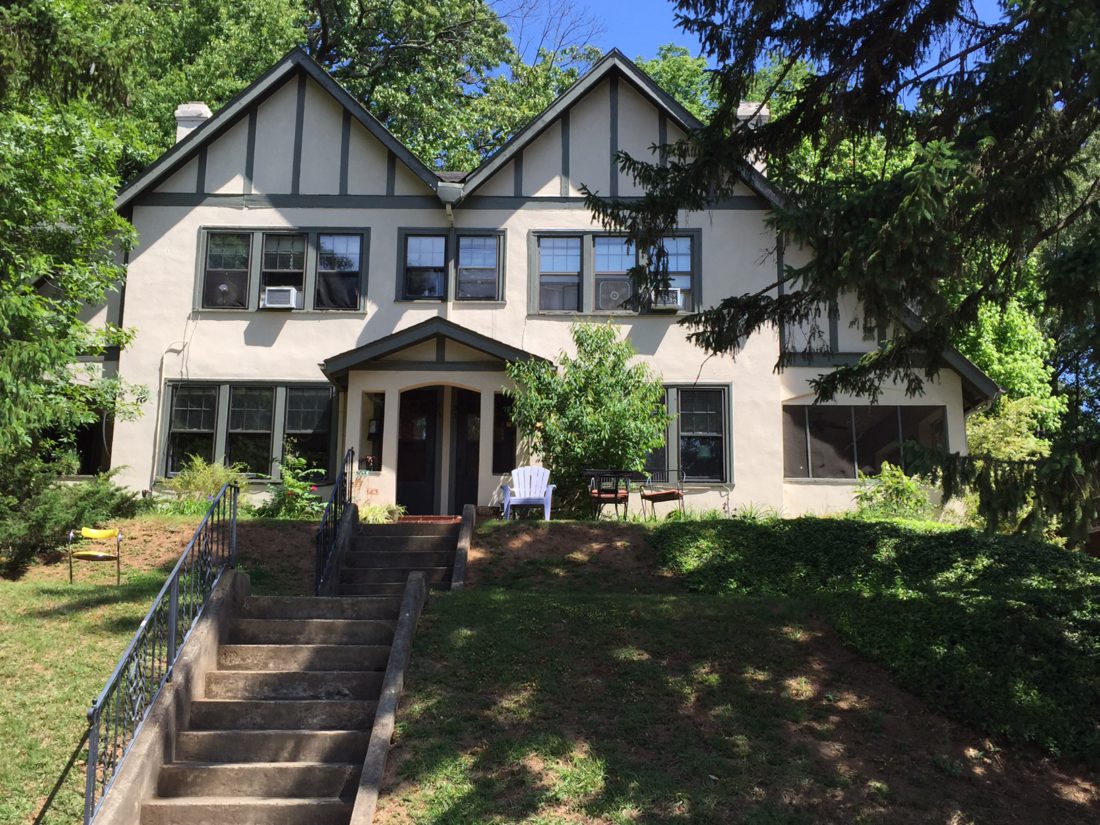BY BEN BROWN
Local folks with an entrepreneurial bent can take a step next week toward small-business ownership — and, in the process, expand the range of housing options in our region.
Visiting faculty from the nonprofit Incremental Development Alliance (www.incrementaldevelopment.org) will lead an all-day workshop to introduce attendees to strategies for planning, designing, financing and managing neighborhood-scale rentals. The event happens Thursday, Oct. 11, at the U.S. Cellular Center in downtown Asheville, sponsored by the city of Asheville, along with area companies and individuals.
Here’s why I think this opportunity is worth considering — and supporting — even if you’ve never looked in the mirror and seen a future real estate developer:
There’s no question that there’s an increasingly troublesome gap between the costs of housing and the abilities of many to pay. It’s a national crisis. Most places that attract people and jobs are at or near the point where median household incomes aren’t likely to qualify for mortgages for median-priced homes. It’s pretty much the same with rentals.

Asheville’s affordability gap is probably bigger than average. With so many people moving here, housing demand is strong and growing. Supply has fallen way behind, especially at price points within reach of workers in a tourism-driven economy forced to compete with those coming to town with piles of cash. The crunch is felt particularly hard in neighborhoods close to downtown and in West Asheville, where it’s possible to walk or bike to accomplish daily tasks and also enjoy the fun of living in Asheville.
Such places offer high location efficiency, an attribute the city recognizes as a crucial component of affordability. The City Council just approved incentives to developers who build housing in close-in areas (See “Asheville City Council Expands Affordable Housing Incentives” in the Sept. 19 Xpress). The trouble is, incentives to rebalance the housing market toward affordability aren’t nearly as large or as effective as those that evolved to create the problem.
Up until the last half of the 20th century, neighborhood ecosystems were more diverse. Small-scale rentals, from duplexes to two- and three-story apartment buildings to cottage courts, were sprinkled among single-family homes. And because walking was the way most folks got around, there was good reason for businesses, schools and other conveniences to be nearby. What wasn’t close could be reached by transit.
A booming post-World War II economy provided new choices for where to live, where to work and how to get around. So we spread out across the landscape. And whole systems of how to pay on credit, how we taxed ourselves and allocated tax money, and how we regulated land use and transportation shifted to prioritize and, in many cases, incentivize single-family homeownership. Choices for renters migrated to two ends of the spectrum — high-rise units in city centers and garden apartments in the suburbs. The middle option of close-in, neighborhood-scale apartments — especially new versions of the old models — went missing.
These days, there’s a booming economy, but primarily for those in the top income brackets. Wages have stagnated for many middle-class workers as costs of living, including the costs of housing, have risen.
What’s the fix?
Well, one way is to somehow re-engineer a shift back into an industrial age economy with decent jobs with great benefits for lots of people. Or, how about yanking back the tax deductions that especially benefit buyers of expensive homes and slashing government spending on highways that make the ’burbs seem economically feasible, then reinvesting the savings in transit and catch-up support for workers’ housing?
Don’t hold your breath, right?
What we can do immediately, though, is to nudge the system into rebalance. Fortunately, with so many empty nesters looking for low-maintenance housing alternatives, and so many young people saddled with college loan debt, the obsession with single-family homeownership distant from jobs, shopping and entertainment is diminishing. Enough people are willing to trade square footage with mortgages for low-hassle, smaller spaces for rent — provided what they get in return is access to all the advantages of walkable, in-town living. Understanding how to address that demand and shape that nudge is what the upcoming Incremental Development Alliance workshop is all about.
You can check out the daylong program and register to attend here: avl.mx/prtx. The fee is $219 (with lunch provided), and some scholarships are available. And we’re still soliciting sponsors to expand opportunities to participate for candidates who otherwise might not be able to attend.
Of course, this one approach isn’t the silver-bullet solution for Asheville’s affordability woes. But it’s an incremental move in the right direction. And it’s a means of addressing the problem in ways that count to many of us. It rewards local entrepreneurs and the workers they employ, perhaps in neighborhoods where they live and work. And it revives a model for housing diversity worth copying in the right locations throughout the region.
Ben Brown, a partner in the consulting firm of PlaceMakers, LLC (www.placemakers.com), is a volunteer on the Asheville host committee for the Incremental Development Alliance. Reach him at benbrown828@gmail.com.




Infill duplexes are being sprinkled into West AVL neighborhoods already and a big new house with apt on Nebraska for $750K !!!
Empty nesters and retirees are doing something for small homes once thought impossible. Making them more valuable than bigger ones.
The house pictured is located next to another apartment building and another two across the street. It’s in north Asheville. A newly built house across from it sold for 475K. Owners are from the north.
What people fail to realize is renters include students which occupy homes near UNCA. And many duplexes and apartments in that area are marketed exclusively to them.